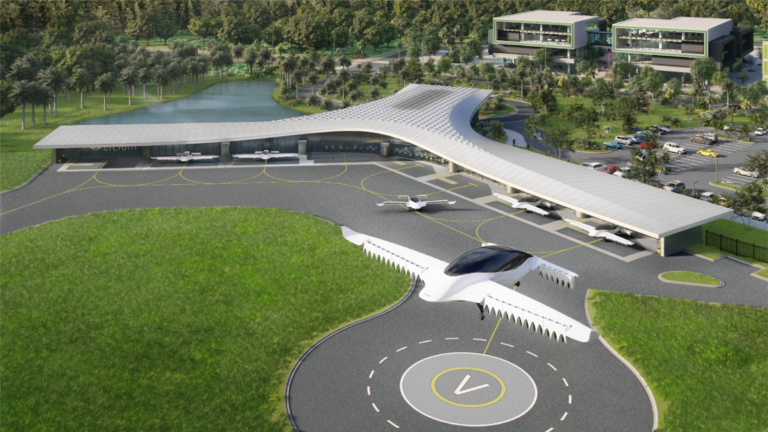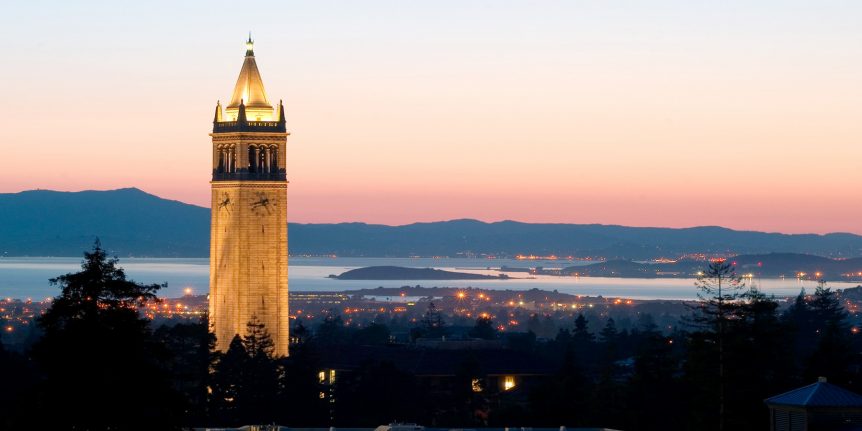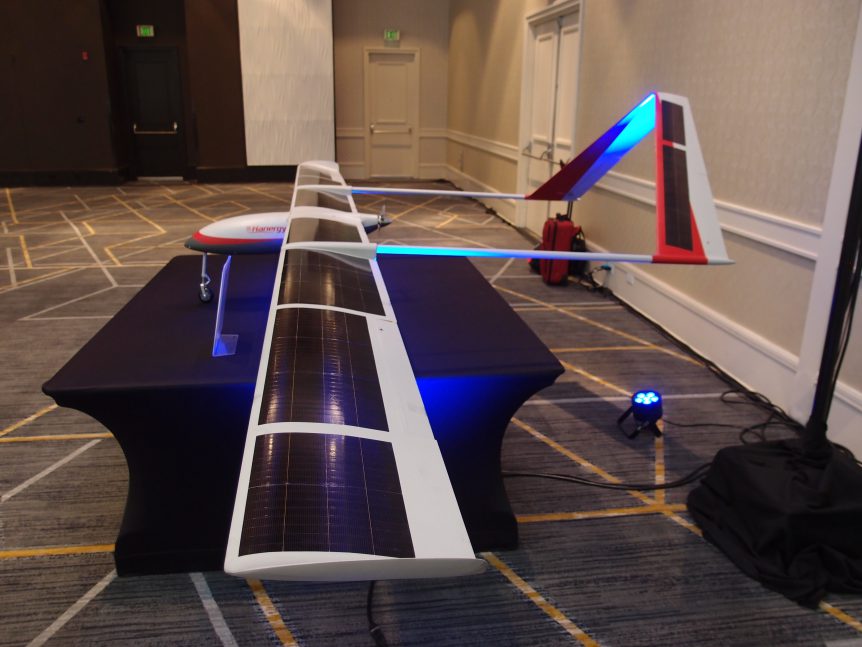Siting and Building Considerations at the 2019 SAS As we see an inrush of capital to finance new electric Vertical Takeoff and Landing (eVTOL) machines and now electric Conventional Short Take Off and Landing (eCSTOL) machines, we are on the cusp of seeing newly envisioned landing zones for these machines. With the departure of Uber from the aerial scene, we probably won’t see the grandiose platforms the firm promoted. Your editor poked fun at these visions in his talk at the 2019 Sustainable Aviation Symposium at UC Berkeley, doubting that urban centers would welcome hundreds of arrivals and departures overhead day and night. Luckily, presenters who had worked on real-world re-imaginings of Uber’s grander vision helped talk your editor down. Byron Thurber, an ARUP architect, discussed “A Practical and Sustainable Transit Hub for Urban Air Mobility –the Uber Elevate Skyport.” Following LEEDS, or Leadership in Energy and Environmental Design criteria, the sustainable building would retrofit an existing parking garage at …
Sustainable Aviation Symposium 2019
The 2019 Sustainable Aviation Symposium is moving to a new date and location – and a new inclusiveness. The University of California, Berkeley Institute for Transportation Studies (ITS) will host the 2019 Sustainable Aviation Symposium (SAS) on October 7-8 of 2019. SAS 2019 is focused on safe, quiet, electric aviation solutions to the most pressing problems of our age: climate change, urban surface gridlock, and the need for integrated community and urban planning to enable high proximity aviation at meaningful scale. Dr. Jasenka Rakas, founder and head of the Airport Design Studio at the University of California at Berkeley, and Sustainable Aviation Foundation founder and President Dr. Brien Seeley will co-chair the meeting that will present a challenging review of aviation’s green future. This year’s symposium will convene thought leaders to answer these core questions: Which systems will win a dominant share of the market and why? How will “urban air vehicles” be made “airline-safe” and autonomous? What new technologies are …
Sustainable Skies in San Francisco – the Sequel
Getting personal once more, this entry highlights my adventures at the 2018 Sustainable Aviation Symposium as reported in the first person. The Sustainable Aviation Symposium for 2018 began its Saturday session with J. Philip Barnes, the Senior Technical Fellow at Pelican Aero Group, who expanded an idea he has been developing for several years – that of flying on energy generated and stored by a self-launching sailplane’s motion through the air. With both a single-seat Coulomb Keeper and larger Faraday First model to analyze, Phil turns to seminal works by Glauert and MacCready to create a motor/generator coupled with a propulsion fan that doubles as a propeller and windmill. Clever use of switching in the control circuitry should enable high-efficiency prolonged flight exceeding what would be possible with batteries alone. Phil’s website is well worth checking out, providing historical and engineering insights at every opportunity. Boris Popov, founder of BRS (Ballistic Recovery Systems) has saved 380 lives (and counting) with …



